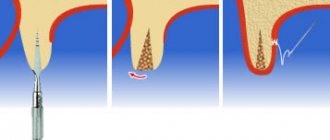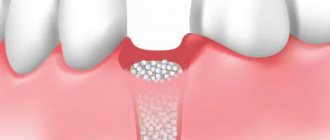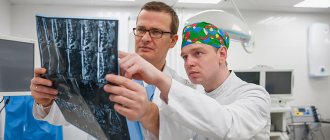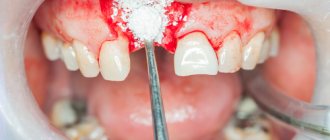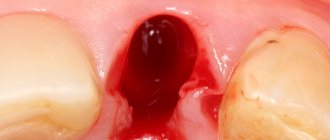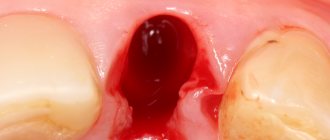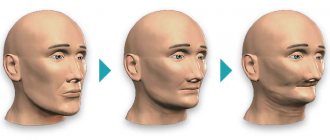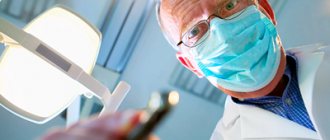What is platelet fibrin
Platelets
- flat, colorless blood cells that participate in clotting and help stop bleeding. When the integrity of a blood vessel is disrupted, platelets are destroyed and substances are released that form a blood clot or thrombus. In the 1980s, an additional property was discovered: the ability to accelerate the regeneration of damaged tissue. This occurs due to the release of peptide and steroid hormones (growth factors) that stimulate the restoration of old cells and the growth and division of new cells.
Plasma
- not just platelets, but enriched platelet fibrin. This is a pale yellow liquid formed after blood is centrifuged. It contains platelets and other biologically active substances:
- proteins (fibrin, formed from fibrinogen);
- lipids;
- hormones and hormone-like substances;
- amino acid metabolites;
- vitamins;
- minerals.
After the injection of autoplasma into the jaw bone, growth factors are activated and gradually released within 7 days. They improve the supply of oxygen to tissues due to the formation of a dense capillary network (neovascularization). Favorable conditions are created to normalize trophism, accelerate regeneration and activate cellular growth in the jaw bone.
Human plasma contains useful substances and is bioinert to tissues, because is a product of the same organism. For this reason, there is never any rejection or side effects from platelet concentrate injections. Injection of autoplasma provides a predictable course of the postoperative period.
Advantages and disadvantages
Advanced APRF membranes are in many cases an excellent alternative to artificial and natural allogeneic and xenogeneic materials due to the following advantages:
- High efficiency , fast and high-quality bone regeneration due to the gradual release of leukocytes, a large number of growth factors, and the absence of complications.
- Rapid tissue regeneration and healing of surgical wounds due to accelerated angiogenesis.
- High (almost one hundred percent) biocompatibility compared to allogeneic and xenogeneic drugs due to the fact that the biomaterial is taken from the patient himself.
- Relatively low cost of membranes (manufactured by the doctor himself directly at the site of surgery).
- Simplicity of manufacture due to automatic adjustment of equipment (in particular, a centrifuge), which does not require lengthy special training of a doctor.
- Convenient and sterile instruments.
- There is no need to collect bone grafts from the patient.
- Non-use of anticoagulants.
All of the above advantages are determined by the presence and correct ratio of cytokines, platelets and leukocytes in the fibrin membrane, the slow and gradual release of growth factors, ensuring high-quality and rapid tissue regeneration.
An additional positive factor is the availability of a full range of convenient and easy-to-use equipment and tools.
How to obtain membranes from blood plasma - plasmapheresis procedure
Plasma therapy uses not venous blood taken from the patient, but centrifuged plasma isolated from peripheral blood. The condition of soft and bone tissues is improved through the injection of autoplasma. This autoplasma is also called PRP (platelet-rich plasma), platelet concentrate or gel.
The best results are obtained from plasma containing at least 1 million platelets per 1 μl. To obtain such a concentrate, a plasmapheresis procedure is performed:
- 15-20 ml of blood is taken from the patient’s dental office from the ulnar vein.
- A test tube with blood is run twice in a separator centrifuge for 15 minutes. This is done to separate excess fractions containing red blood cells and white blood cells.
- Fractions used in dentistry - plasma and fibrin clot - are taken from the test tube.
Platelets, fibrin and other biologically active substances are concentrated, forming thick autoplasma (platelet gel). The resulting concentrate is injected into the marginal gum, dentogingival papilla or transitional fold.
In addition, a fibrin clot (blood plasma membrane - PRF membrane) is formed in the test tube. Such a membrane can be cut and stitched for use in various techniques - osteoplasty, tooth extraction surgery after extraction to stimulate reparative processes in the socket.
Membranes for bone grafting are stored for no more than four hours, so plasmapheresis is performed on the day of surgery.
Receiving technology
The technology for manufacturing the drug is available and consists of the following steps:
- Blood is drawn from the Patient's vein (for the A-PRF form only glass tubes are used, for PRE - plastic), the quantity and volumes are determined by the doctor depending on the purpose;
- within fifteen minutes the blood is processed in a centrifuge, where fractions are separated and protein is separated;
- after turning off the equipment, you need to wait for the formation of a clot, which is removed with tweezers and placed in the box;
- By removing excess liquid, the specialist receives a membrane, which is given the desired shape and size with scissors.
Application of PRF membranes for bone tissue growth
Membranes from blood plasma are not used as a separate method of osteoplasty - they are not enough to replenish the size of bone tissue in full. But they are used to prepare jaw tissue for implantation when the bone structure is unsatisfactory, preventing the installation of an implant of sufficient length. Used as an addition to osteoplastic operations (independent or prior to implantation):
- sinus lift;
- alveolar ridge augmentation;
- bone block transplantation;
- guided bone regeneration.
Splitting of the alveolar ridge Increasing the volume of bone tissue in width by adding osteomaterial inside the alveolar process
Guided bone regeneration The lack of tissue is filled with a bone substitute, which is secured with a membrane. Use proprietary or synthetic materials
Sinus lifting A bone grafting method aimed at increasing the volume of bone tissue in the upper jaw in the area of the maxillary sinuses
When osteoplasty and implantation are performed simultaneously, the membrane accelerates the processes of osseointegration and stabilization of the implant. This is an effective way to activate the process of fusion of bone materials and implants with the jawbone, since the platelet concentrate contains tissue cell growth factors in large quantities. Membranes are also used for immediate installation of implants into the socket of an extracted tooth.
Properties and purpose
The main difference between fibrin membranes and osteosubstituting material is not the replacement of a section of the jaw bone with artificial material, but its restoration and regeneration.
As part of their regenerating and healing functions, APRF membranes have a number of extremely useful properties:
- Stimulate vascularization (formation and growth of blood vessels).
- Stop bleeding, reduce swelling.
- Prevent local complications.
- Reduces postoperative pain.
- Accelerate wound healing and shorten the rehabilitation regime.
- Minimize the risk of implant rejection.
- Stimulate local defense mechanisms.
The angiogenic (vessel-forming) properties of APRF membranes deserve special attention. Without the presence of blood vessels, bone regeneration is impossible, since the influx of cells necessary for the regeneration of bone tissue and the outflow of metabolic products into the wound area is not ensured. APRF membranes have a powerful angiogenic effect.
APRF material is an alternative to allogeneic and xenogeneic collagen membranes and bone replacement material and is intended for use in maxillofacial and periodontal surgery , and also as a preparation for implantation and prosthetics.
Functions of Lioplast in the restoration of connective tissue complex in dentistry.
This publication is all about the Multi-Unit implant system.
Here https://www.vash-dentist.ru/implantatsiya/metodiki/kogda-aktualno-korotkih.html find out whether short implants are installed on chewing teeth.
Why else is plasma lifting done in dentistry?
In addition to osteoplasty, plasma lifting in dentistry is used in the following cases:
- generalized or localized chronic periodontitis and periodontal disease, gingivitis, resistant to other conservative dental treatment methods;
- traumatic extraction of teeth or during reposition of jaw bone fragments as a result of trauma to the maxillofacial area;
- prevention of peri-implantitis, alveolitis and periodontal inflammation;
- to accelerate tissue regeneration after vestibulo- and gingivoplasty.
Comparison of two methods
Compared to the PRF technique, APRF membranes have a number of both technological and therapeutic advantages:
- Increased content of leukocytes with prolonged release of growth factors (for more than 7 days), which helps accelerate tissue regeneration.
- Accelerated (2.5 times) vascularization.
- Increased concentration of endothelial and stem cells.
Additional benefits are achieved:
- using glass tubes instead of plastic ones;
- using a centrifuge with automatic mode switching, adapted for glass tubes;
- the use of high-quality steel instruments that can withstand repeated sterilization and processing;
- using a special press, which makes it possible to obtain durable, large thickness and width membranes in quantities of up to 12 at a time.
The advantage of the APRF technique over the PRF is facilitated by the use of many other tools specially adapted for the tasks of manufacturing the APRF membrane - mini-trays, mixing cups, double-sided spatulas, pluggers, cutting scissors with a configuration suitable for the shape of the cup, etc.
The video provides additional information on the topic of the article.
Reviews
The fact of using PRF and APRF membranes cannot go unnoticed by the patient, since his blood is taken for the production of biomaterial. And, of course, the doctor informs his patient about what technology is used in this case.
If you had surgery using APRF membranes, please tell us what kind of clinical case it was? How long did the operation take and how did it end? How painless and easy was the wound healing? You can leave a comment at the bottom of this page.
If you find an error, please select a piece of text and press Ctrl+Enter.
Tags implantation collagen membrane
Did you like the article? stay tuned
Previous article
Sevoran is the “gold standard” in modern dentistry for children
Next article
How popular is vacuum therapy in dentistry and the essence of the technique?
